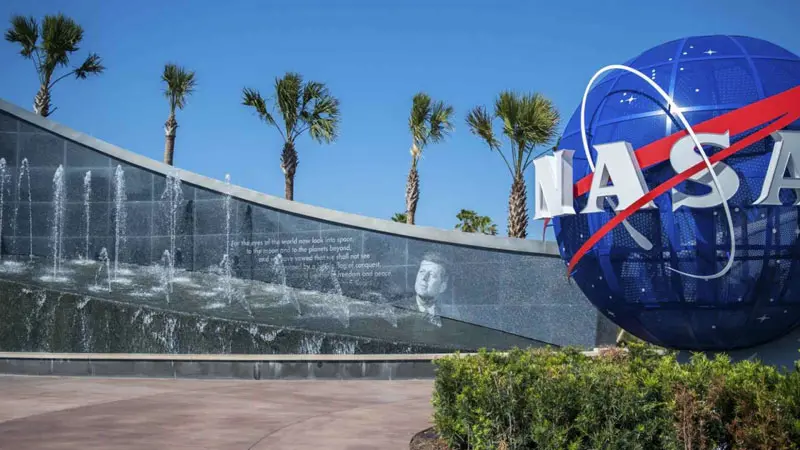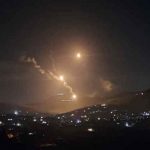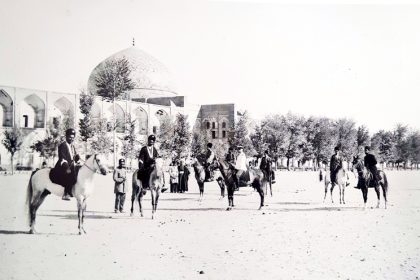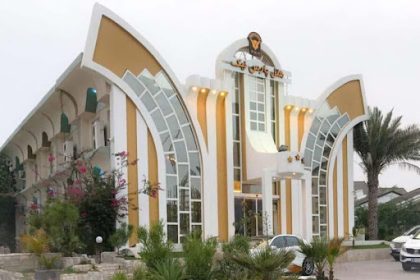NASA is the most famous space agency in the world, which operates in scientific branches related to aviation and space industries, and its headquarters is in America.
Space tourism is attractive to many people interested in new sciences, and astronautics and travel to the farthest parts of the solar system attract the attention of many people. In this regard, many organizations and scientific institutions of the world are exploring ways to travel to space and human life in other planets of the solar system. Meanwhile, the NASA organization has a widespread reputation and there are few people who have not heard the name of this world’s space agency. Starting in the 1950s, NASA has had numerous manned and unmanned projects. Also, Iranians such as Firoz Naderi and Yasmin Moqbli have worked in NASA.
Everything you want to know about NASA:
What is NASA?
NASA is the National Civil Aeronautics and Space Administration of the United States, which leads space exploration. This organization cooperates with many universities and international scientific and commercial companies in the direction of expanding knowledge and improving people’s lives. In the eyes of the general public, NASA is a space organization; But in fact, most people do not know much about the activities of this organization.
Photo Source: Inc., Photographer: Unknown
NASA has a workforce of over 17,000 people. Astronauts may be NASA’s best-known employees; But they constitute only a limited number of the total workforce.
The most important activities of this organization include space exploration in the solar system, efforts to improve air travel and improve the quality of flights, exploration of the moon and Mars, and improving the quality of manufactured products in the world. Also, NASA helps teachers to educate students and improve their science in the field of research in various fields of technology, engineering, mathematics and astronautics.
One of the most important results of NASA’s activities and scientific research is the advancement of the air transport system and aviation industry in the world, especially in the United States. This organization contributes to economic competitiveness among countries and supports the creation of high-quality and high-paying jobs around the world. The main headquarters of the NASA space agency is located in Washington DC (Washington DC), the capital of the United States; But nine main laboratories in the field of jet propulsion and seven other research centers are also operating in other states of this country.
NASA’s goal
NASA seeks to discover the unknown in air and space. This organization is considered the biggest creator of scientific innovations in the world for the benefit of humans, and its research inspires many scientists in different scientific fields around the world. NASA strives to expand human activities in the solar system in order to bring new opportunities for life back to Earth. This organization has also provided valuable information on climate change to the world using satellite probes.

Apollo spacecraft, photo source: NASA website, photographer: unknown
Supporting the economic growth of countries in the aviation and astronautics industries is also one of NASA’s other important goals. This organization supports the development of technologies and the discovery of new knowledge in various scientific branches. During the long years of NASA’s activity, unique scientific achievements of this organization have been recorded in history, which are one of the honors of this collection. In general, the main goals of NASA can be listed in the following cases:
- Expanding human knowledge through new scientific discoveries
- Addressing national challenges and accelerating American economic growth
- Improving the quality of scientific research in the world
- Expanding the presence of humans in space and the moon in order to use the solar system’s capacities for a long-term and sustainable way to improve the quality of life for humans on earth.
NASA’s science advancement activities and goals are controlled by four major operating companies and a mission support office in the US capital. The daily work process of this organization is also going on in NASA’s laboratories, airports, wind tunnels, control rooms and other facilities, whose funds are provided by the American federal agency.
History of NASA
More than 65 years have passed since the beginning of NASA’s activities in America. In the 1950s, at the same time as the Cold War (the era of conflicts between the Soviet Union and the United States and its allies) and the launching of the first Sputnik satellite into space by the Soviet Union, the American government tried to establish a national space organization; In this way, on July 29, 1958 (7th August 1337), NASA was founded with the approval of the President of the United States, Dwight Eisenhower.

Photo source: NASA website, photographer: unknown
At the time of its establishment, NASA replaced the National Advisory Committee for Aeronautics, with the abbreviated name of Naca, and Thomas Keith Glennan took the title of the first director of NASA. did The first space satellite of this organization named Explorer 1 was launched in 1958.
“Yuri Gagarin” (Yuri Gagarin) was the first astronaut who was sent to space by the Soviet government in 1961 with the “Vostok 1” spacecraft; But one month after the space travel of this Russian scientist, “Alan Shepard” became the first American NASA astronaut by the “Mercury-Redstone 3” spacecraft. After that, during the years of NASA’s activity, hundreds of different research and operational projects have been implemented in the earth’s orbit by the scientists of this organization, and these activities are still ongoing.
NASA is involved in the International Space Station with 15 other members. Out of these 15 members, 11 seats belong to European space organizations. Among the ongoing projects of the NASA organization in space, many of them are carried out without a crew. This organization is currently responsible for carrying out the national plans of the United States in the field of space programs and also manages and implements commercial and military aerospace research.
What does NASA stand for?
NASA stands for National Aeronautics and Space Administration.
NASA projects
During the more than 65 years of the organization’s activity, NASA projects have focused on space flight programs to explorations in the solar system. Some activities of this organization are carried out in space only with unmanned transmitters, and others are accompanied by astronaut scientists. In the following, we will examine some of the most important NASA projects.

Atlantis spacecraft, photo source: NASA website, photographer: unknown
NASA space flight programs
In NASA’s space flight programs, some operations have made history, and their achievements have had a significant impact on the advancement of technology and improving the quality of human life. The presence of professional scientists and astronauts is necessary in many NASA space programs, and these people are trained for years to prepare for space travel.
The following are the most important NASA space flight programs:
- Operation Mercury Redstone III in 1961 and sending the first American astronaut (Alan Shepard) into space
- The launch of the Apollo 8 astronaut into space with three astronauts and seeing the entire Earth from space for the first time by them in 1968.
- Apollo 11 space mission in 1969 and the landing of man on the moon
- The establishment of the International Space Station in 1998 and the landing of the first astronauts on it in 2000

Project Apollo, photo source: NASA website, photographer: unknown
NASA explorations in the solar system
Many of NASA’s explorations in the solar system have been accompanied by the launch of various rockets, satellites and unmanned astronauts. The achievements of these excavations have a wonderful impact on human life and are also effective in how future generations live on Earth or other parts of the solar system.
The following are the most important explorations of NASA in the solar system:
- Pioneer 10 and 11 were launched into space in 1972 and 1973, as the first spacecraft to visit Saturn and Jupiter.
- Voyager 1 and 2 probes in 1973 around Jupiter and Saturn and the discovery of 10 new moons for Uranus
- Landing of the Viking-1 probe on Mars and sending the first color images from this planet in 1976.
- The launch of the spacecraft carrying the Hubble Telescope and its placement in space in 1990
- The landing of the Mars Pathfinder robot on this planet in 1997
- Cassini-Huygens spacecraft launch to Saturn in 1997
- Activity of Chandra observatory since 1999
- The WMAP (WMAP) probe was launched into space in 2001 to map cosmic rays and investigate the origin of the universe.
- Spirit and Opportunity rovers landing on opposite sides of Mars in 2004
- The explorations of the Spitzer telescope in space in 2005 and the discovery of the light of exoplanets (planets outside the solar system) for the first time.
- The Kepler spacecraft was launched into space in 2009 to discover and observe exoplanets in the Milky Way galaxy.
The Iranians of NASA
According to Sputnik news agency and “Space” magazine, more than 40% of NASA’s scientists, specialists and research staff in the 2000s and 2010s were Iranians. Some of the most famous Iranian scientists and researchers are still working in this organization and are in charge of NASA’s various operational projects.

Yasmin Moqbali in the NASA spacecraft mission, photo source: CNBC website, photographer: unknown
One of the most famous Iranian scientists of NASA organization is Dr. “Firouz Naderi”, who during his years of work in NASA was in charge of the executive management and command of significant departments such as the executive program of the planet Mars in the NASA space station. Research in NASA’s Jet Propulsion Laboratory was also one of the other activities of this Iranian scientist in this organization. In the last five years of his career at NASA, Professor Naderi was in charge of managing the Solar System Exploration Project. Professor Naderi died on June 19, 1402, at the age of 77.
Another famous Iranian NASA scientist is “Professor Mohammad Jamshidi”. For many years, he was the director of internal programs of the NASA space station and a consultant for other projects such as launching robots into space. “Yasmin Moqbali” is another well-known Iranian name in the list of Iranian scientists of NASA, who was in charge of the seventh mission of SpaceX in 2023.
Babak Ferdowsi is one of the Iranian researchers in NASA, who has been working in this organization since 2003. This young scientist studied in the field of air and space in America and has a history of participating in various research projects in NASA. “Dr. Azadeh Tebazadeh” is a well-known Iranian scientist in the field of physical chemistry, and after receiving his doctorate in this field, he joined NASA as a research scientist in earth sciences in 1997, and due to his significant scientific achievements about the earth’s climate changes, he was nicknamed ” “NASA star” has been given to him.
Dr. Mustafa Chamran is one of the other Iranian scientists who worked with the NASA space agency during his stay in America. The names of some other Iranian scientists and researchers working in NASA during the years of activity of this organization along with their responsibilities are as follows:
- Professor Parviz Moin, director of the Central Research Institute of NASA University
- Professor Samad Khaitan, member of the Board of Directors of the NASA Space Station
- Dr. Mehta Moghadam, research director at NASA’s Jet Propulsion Laboratory on Radars
- Hamid Baranji, member of NASA space station researchers
- Qassem Asrar, a member of the board of NASA space station
- Kazem Omidred, a member of NASA space station researchers
- Reza Ghafarian, engineer of NASA space station jet propulsion laboratory
- Abdulhamid Karimi, working in the construction of NASA space rockets
Employment at NASA
Although NASA’s astronauts, senior commanders, and managers are the most famous employees of this organization, there are many more people working at NASA. More than 17,000 people work in various fields of research and operation, as contractors or contracts in NASA organization. Among the job titles available in NASA, there are examples such as secretary, writer, lawyer and teacher, which are suitable opportunities for those interested in working with this organization.
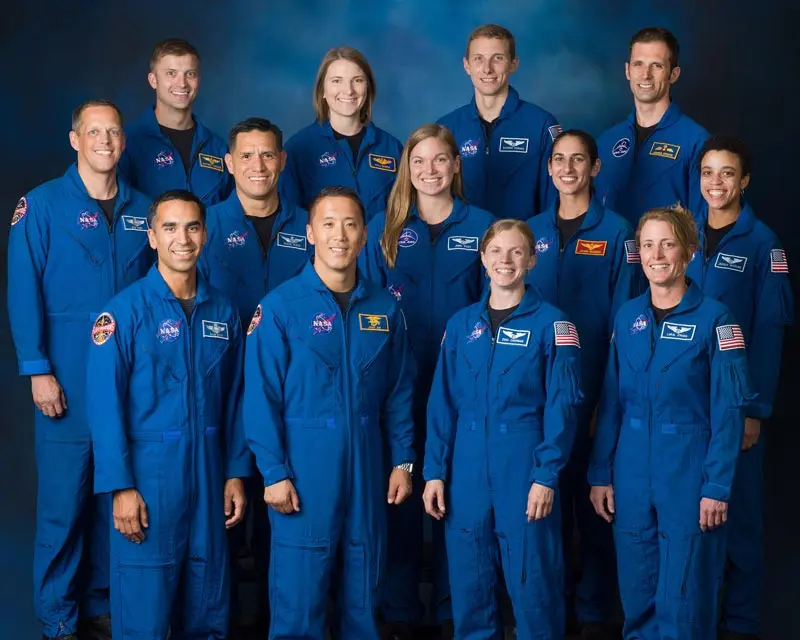
Yasmin Moqbali among NASA astronaut trainees in 2017, photo source: NASA website, photographer: unknown
NASA’s slogan for recruiting different forces is: “If you have a passion for exploration, join us.” On the website of NASA, it is possible to send resumes for those interested in participating in various activities of this organization. Except in exceptional cases, an applicant for a position at NASA must be a US citizen.
Applicants for a job in NASA declare their desire to work with this organization by sending their personal information regarding academic major, skills and abilities. After reviewing the resumes sent to NASA by the managers of this company, if people are accepted, they will be offered job opportunities according to the position of each person, and after going through the first steps and conducting job interviews, internship courses will be held for people accepted at NASA.

Satellite image of the sun, photo source: NASA website, photographer: unknown
In this article, we introduced the NASA space agency and its goals and examined the history of this organization. You can also share your information with us and other Kojaro companions.
Cover photo from NASA website, photographer: unknown
Frequently asked questions
What is NASA and where is it?
NASA is the national civil aeronautics and space agency of the United States and its headquarters is located in Washington, DC, the capital of the United States.
What does NASA stand for?
NASA stands for National Aeronautics and Space Administration.
RCO NEWS




